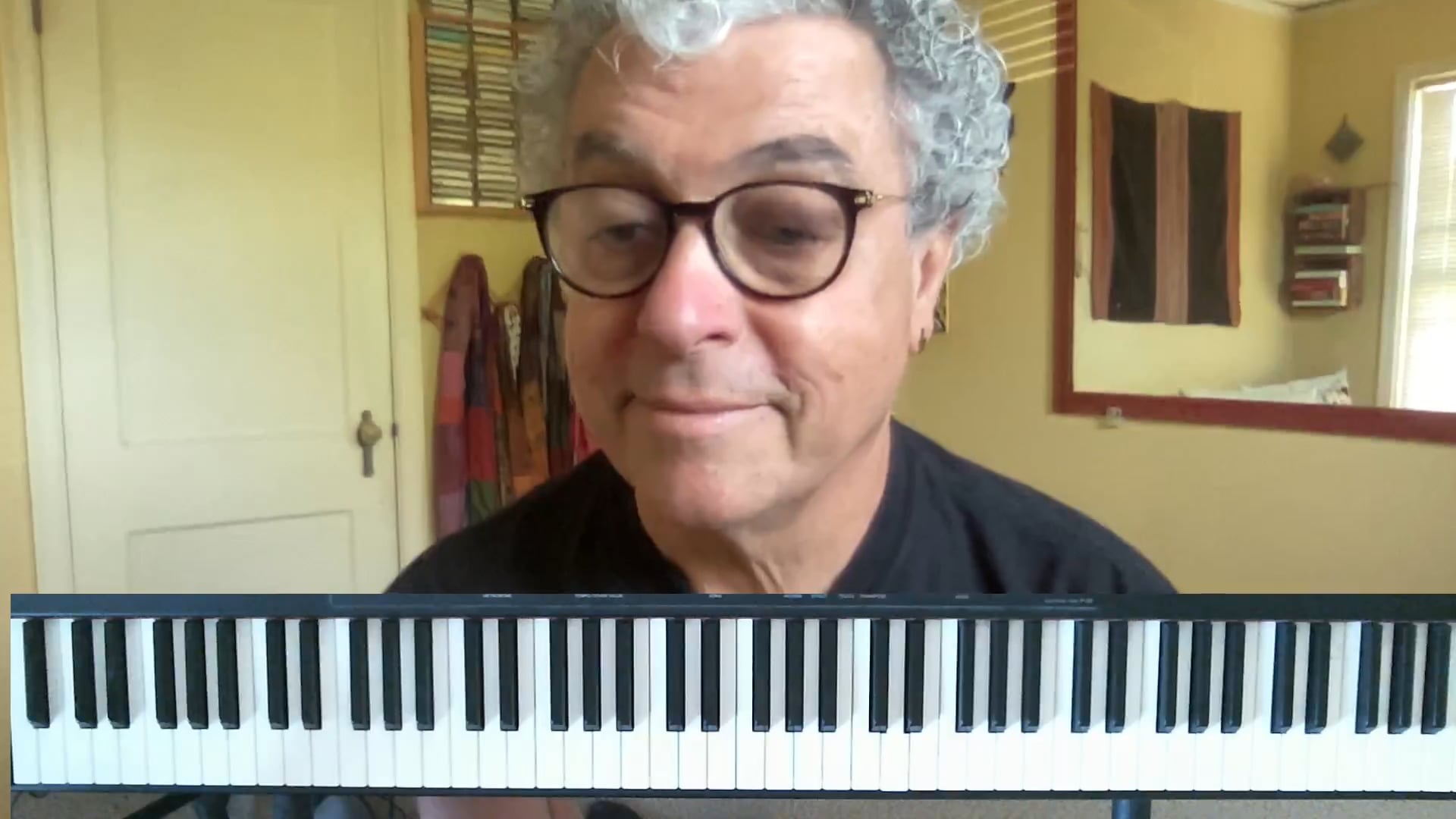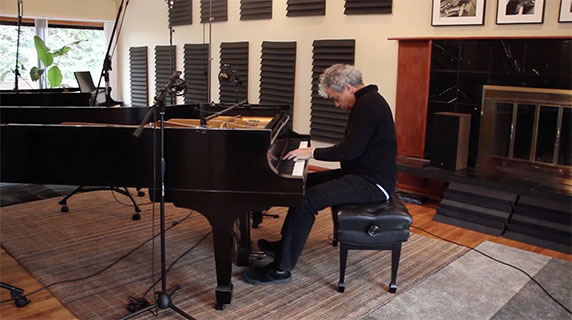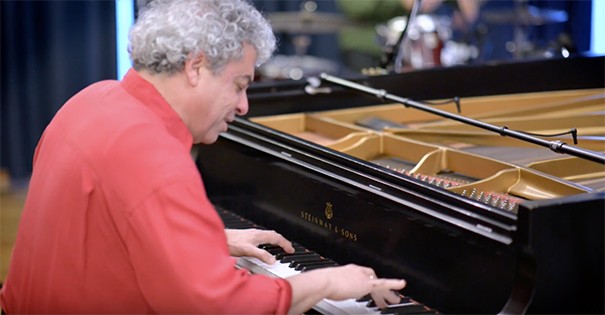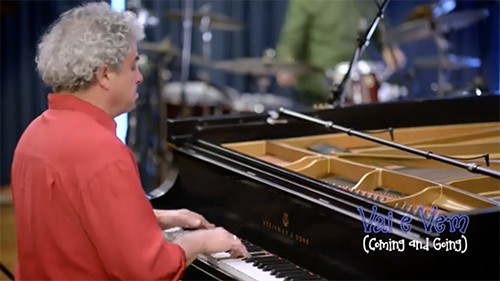

Jovino Santos Neto
Three-time Latin Grammy nominee Jovino Santos Neto, a master pianist, composer and arranger, is among the top Brazilian musicians working today.
Live Seminar Resources
Live Seminar Resources
PDF Downloads
- O Canto da Ema
Join PianoGroove Pro to access all downloads and learning resources.
Download theory supplements, midi files, chord changes and full note-for-note transcriptions of every lesson.
- Papo Furado
Join PianoGroove Pro to access all downloads and learning resources.
Download theory supplements, midi files, chord changes and full note-for-note transcriptions of every lesson.
- Feira de Mangaio Am
Join PianoGroove Pro to access all downloads and learning resources.
Download theory supplements, midi files, chord changes and full note-for-note transcriptions of every lesson.
- Ginga Workbook
Join PianoGroove Pro to access all downloads and learning resources.
Download theory supplements, midi files, chord changes and full note-for-note transcriptions of every lesson.
Seminar Description
Seminar Description
The Musical Language of Baião
Welcome to this live seminar on Baião, a rhythmic and melodic style deeply rooted in Brazilian music. In this lesson, we explore the essential groove, harmonic structure, and improvisational techniques of Baião, with insights into its cultural origins and practical applications for piano.
Understanding Baião’s Rhythm
At its core, Baião is driven by a 3-3-2 rhythmic pattern, a syncopated groove found in various global musical traditions, from North Africa to New Orleans jazz. Unlike Samba, which features a steady, even pulse, Baião’s groove creates a sense of forward motion through its distinct displacement of the beat.
On the piano, we replicate this rhythmic feel by alternating between the hands smoothly and evenly, much like pedaling a bicycle. The interplay between hands should be balanced, ensuring that one hand does not dominate over the other.
Key Baião Rhythmic Patterns
-
Basic 3-3-2 Groove:
Rooted in a left-hand ostinato pattern, this provides the foundational pulse. -
Eighth-Note Accompaniment:
A right-hand eighth-note pulse complements the syncopated left-hand rhythm, adding drive and energy. - Double Fork Pattern:
A variation that enhances the syncopation by shifting accents within the 3-2-3 framework, creating a "bouncing" feel.
Harmonic Structure & Modal Approach
Baião melodies often follow a modal approach, utilizing Mixolydian and Dorian modes rather than conventional chord progressions. This means fewer harmonic changes, allowing for modal improvisation and rhythmic freedom.
Example Chord Progressions in Baião
-
A Minor Baião Progression:
A-7 → E7 (I-7 → V7) -
G Major Baião Progression (Mixolydian Mode):
G7 → C7 (I7 → IV7) - Diatonic Cadence Variation:
A-7 → A7 → D-7 → G7 → Cmaj7 → Fmaj7 → Bb7 → Ebmaj7
These progressions often remain harmonically simple, focusing on groove and modal phrasing rather than complex harmonic movement.
Melodic Characteristics of Baião
Baião melodies feature several distinct traits:
- Repeated Notes: Mimicking the sound of the viola caipira (a Brazilian 10-string guitar) and accordion, repeated notes create a percussive, rhythmic quality.
- Syncopated Accents: Melody lines often emphasize the last eighth note of a phrase, adding rhythmic drive.
- Blues Influence: Many Baião melodies incorporate bluesy elements, such as the use of the flat 5th (tritone) or Mixolydian dominant sounds.
Baião Improvisation Tips
When improvising in Baião, focus on:
- Repeated-Note Motifs – Incorporate percussive, staccato articulation.
- Syncopation & Off-Beat Accents – Emphasize phrases that land on the last eighth note.
- Blues Influence – Mix Mixolydian, Dorian, and Blues scales for expressive phrasing.
- Modal Shapes – Use 4th-based and pentatonic patterns to navigate melodic ideas.
- Balance Between Hands – Ensure the left hand maintains groove stability while the right hand develops melodic lines.
Essential Baião Repertoire
To deepen your understanding of Baião, explore compositions by Luiz Gonzaga, the "King of Baião," and other Brazilian greats like Hermeto Pascoal, Sivuca, and Dominguinhos. Notable pieces include:
- "Bebê" (Hermeto Pascoal) – A brilliant example of modal and rhythmic interplay.
- "Feira de Mangaio" (Sivuca) – Demonstrates the repeated-note phrasing characteristic of Baião.
- "Asa Branca" (Luiz Gonzaga) – A classic Baião standard, showcasing the genre’s melodic and rhythmic elements.
Final Thoughts
Baião is a dynamic and rhythmically intricate style that bridges jazz, blues, and Brazilian folk music. By internalizing its groove and phrasing, you can expand your improvisational vocabulary and rhythmic fluidity.
Keep exploring Baião by listening to traditional recordings, transcribing rhythms, and practicing syncopation in your playing. Have fun integrating these techniques into your jazz piano journey!
5 Practice Tips for Baião
- Internalize the 3-3-2 Groove – Practice clapping the rhythm before applying it to the piano.
- Balance the Hands – Ensure smooth coordination between the syncopated bass and right-hand comping.
- Use Repeated Notes – Emphasize staccato articulation to mimic the feel of Baião instrumentation.
- Explore Modal Improvisation – Focus on Mixolydian and Dorian scales for authentic phrasing.
- Transcribe & Listen – Study classic Baião recordings to absorb the feel and phrasing of the style.







Thanks for another great session.
🙌🥰